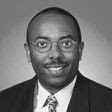
Espn.com is reporting that Al Davis has fired Raiders head coach Lane Kiffin. The news isn’t surprising, but what has caused a stir is that Raiders announced that they do not plan to pay Kiffin the remainder of the salary due under his three-year, $6 million contract. The question is, can they do this? Or, perhaps, how can they do this?
Well, the Raiders are apparently claiming that Kiffin was fired “for cause” and thus has no right to any further compensation under the contract. I have not seen the terms of Kiffin’s contract, but let’s assume that it has a broad “for cause” provision that either does not specifically define for cause or gives a non-exhaustive list of examples of what might constitute for cause. For example, let’s assume the contract says something to the effect of: “If coach is fired for cause, he shall not be entitled to any further compensation under the contract.”
So, what is the “cause” for firing Kiffin in this case? It appears that the Raiders will argue that Kiffin was fired because of the team’s poor win-loss record during Kiffin’s tenure. The Raiders finished 4-12 in Kiffin’s first year as coach and have started this season with a 1-3 record. Absent a specific definition in the contract, does a 5-15 record constitute cause? Or, stated more broadly, does poor performance of a team constitute cause for firing the team’s coach?
There is some precedent in the NFL—created in part by Al Davis— supporting the Raiders on this one. Back in 1989, Al Davis fired then-head coach Mike Shanahan after he started the season with a 1-3 record (the team finished 7-9 in Shanahan’s first year as the coach) and refused to pay Shanahan the remainder of his salary. Shanahan filed a grievance against Davis, but lost. Shanahan has received some payback, though, as his Broncos have won eight out of the last ten games against the Raiders (then again, the Raiders haven’t won many games against anyone recently).
In addition, there is a fairly recent case from the Montana Supreme Court--
Cole v. Valley Ice Garden, LLC, 113 P.3d 275 (Mont. 2005)—that addresses this precise issue and provides further support for Davis. In Cole, the owner of an American West Hockey League team fired his coach for cause after the team started its season with a 1-6 record and refused to pay the coach the remainder of his salary. The coach’s contract did not define for cause, but the court concluded that for cause means a “legitimate business reason” and “[e]ssentially connotes a fair and honest cause or reason, regulated by good faith on the part of the party exercising the power.” The court therefore held that “[d]ischarging the coach of a professional sports team which is performing poorly, despite management’s good faith efforts, is a discretionary decision related to the legitimate needs of the business and constitutes ‘cause.’
This report indicates that Kiffin may also have been fired because of insubordination, citing Kiffin's “brutal public honesty about his lack of control over coaching and personnel decisions since he was hired in January 2007.” If that’s the case, Davis’ for cause argument will carry even more weight.
So, absent specific controlling language in the contract, it appears that Al Davis and the Raiders may actually have a chance to win something this year.
Update: Espn.com has an update on Al Davis' explanation for firing Kiffin. Here's the latest:
Davis read a letter that he sent to his former coach that detailed mistakes made on and off the field by Kiffin. Davis finally concluded that he fired the coach for cause because he "disgraced" the organization, citing everything from conflicts over personnel moves to outright lies to the media.
"I don't think it was any one thing," Davis said. "It was a cumulative thing. I think the pattern just disturbed me."
Again, it's hard to analyze the issue without seeing the for cause provision in the contract, but it is clear that Davis will try to rely on a lot more than Kiffin's win-loss record in arguing that he had cause to terminate.












 The forum will be webstreamed live from the above webaddress.
The forum will be webstreamed live from the above webaddress.



